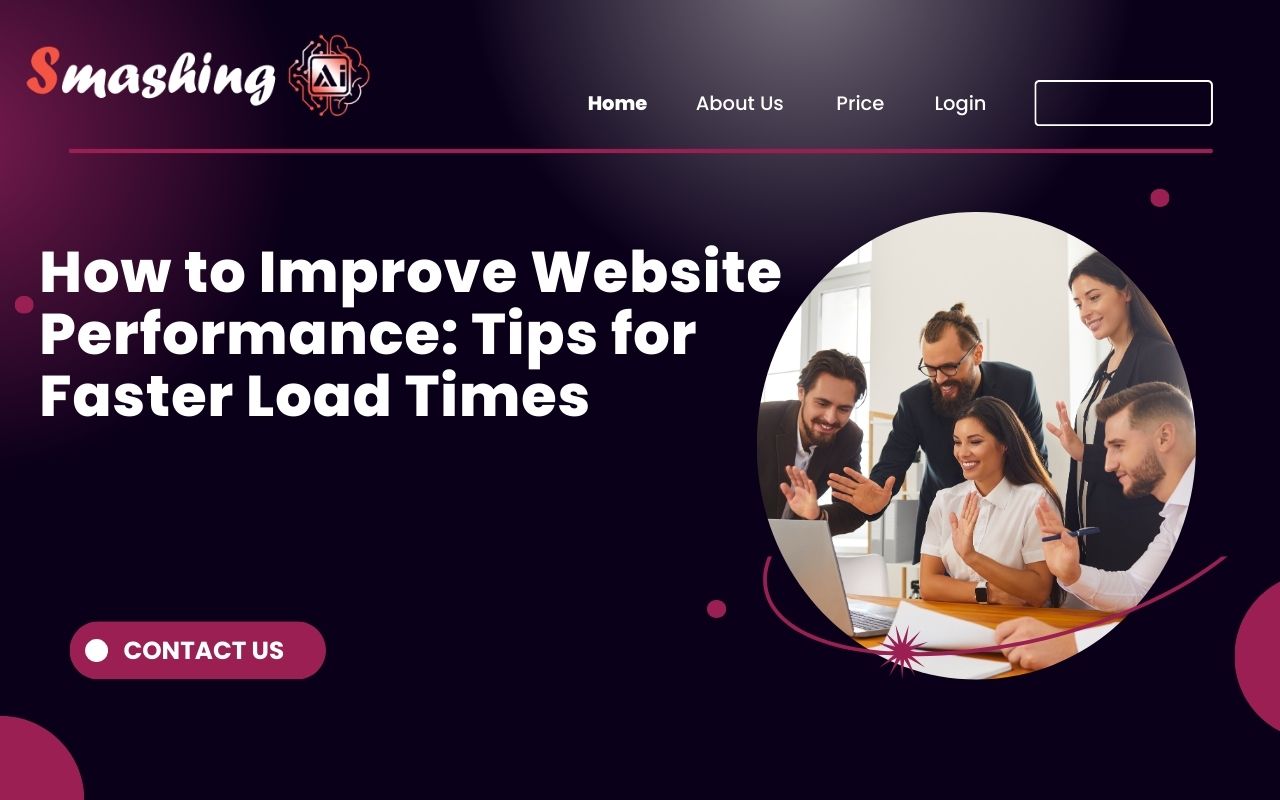September 19, 2024
Introduction: Why Website Speed Matters
In the digital world of today, the pivotal role is played by website performance in both user experience and SEO rankings. When visitors get frustrated, it is due to slow load times but also negatively impacts your search engine performance, which leads to the leading to fewer conversions and lost business opportunities. Whether you’re a
WordPress Development Company in Sheridan, WY, USA, or offering
Mobile App Development Services, should always ensure fast load times are essential to keeping users engaged and improving your search rankings.
If you need to enhance user satisfaction then a faster website, lower bounce rates, and increase the time visitors spend on your site, all of which are critical factors for SEO. This article covers some effective strategies to improve website performance and how can one achieve faster load times.
1. Optimize Images for Faster Load Times
Unoptimized images and large images are one of the leading causes of slow websites. If properly unoptimized images with high visual appeal but with high resolution can significantly slow down the load time of the website. To avoid this one should compress the images without changing quality using tools like
TinyPNG or Photoshop’s
"Save for Web" function. If you are adopting modern image formats like
WebP it can further reduce file sizes while maintaining image clarity.
For performance to be optimal be ensure that your images are resized to the correct dimensions for display. Reducing image resolution unnecessarily wastes bandwidth and processing time. By optimizing images, your website will load faster, creating a seamless browsing experience for users.
2. Leverage Browser Caching
Caching of the browser is also important because it allows static resources such as images, stylesheets, and JavaScript files to be stored on the user’s device, which will indirectly enable quicker load times for repeat visitors by eliminating the need to download the same resources every time they visit your site.
For implementing the browser caching, configure expiration dates for specific file types (e.g., cache CSS files for one month, and images for one year). This method is particularly effective if you have a large number of returning visitors. The amount of data gets reduced as your server needs to send, and also the website performance is enhanced with caching static resources.
3. Minimize HTTP Requests
Javascript code can help in minimizing the HTTP requests as it combines the CSS files in one script. Whenever someone requests each element of your web page (images, scripts, CSS files), it requires an
HTTP request to load, and too many requests can lead to slow load times. So, JavaScript can be used to reduce the number of these requests and can significantly improve website speed.
Additionally, consider using
CSS sprites, which combine multiple images into a single file. This technique reduces the number of separate requests the browser needs to make for each image, speeding up the overall page load time.
“Also Check: Unlocking the Digital World: A Beginner’s Guide to Web Development”
4. Use a Content Delivery Network (CDN)
The use of a
Content Delivery Network (CDN) can help in delivering your website’s content from servers located closer to your users, which can reduce latency and improve load times. With a CDN, static files like images, CSS, and JavaScript are cached on multiple servers across the world. When users visit your site, they are served content from the nearest server, which significantly reduces load times, especially for international visitors.
When you are targeting a global audience, then the use of CDN can be an important one, or if you run an e-commerce store where fast load times can make the difference between a conversion and a bounce. Whether your business serves local or global markets, a CDN can ensure faster website performance.
5. Optimize Web Hosting for Performance
A web hosting provider plays an important role in determining the website's load time and performance.
Shared hosting plans can be appealing at first, but they fail at high traffic times. If your multiple websites share the same resource, then it is the true statement in concept to load times.
Cloud-based hosting and a perfect dedicated server upgrade can speed up the performance. These options offer better server response times, ensuring your website remains fast even under heavy traffic. If you're running a high-traffic website, investing in quality hosting is essential to maintaining optimal performance.
Conclusion: Fast Load Times Are Non-Negotiable
It is an era where users need instant access to information, and prioritizing website speed is non-negotiable. SEO rankings may go down if visitors get away from your websites. Simple website optimization techniques like compressing images, leveraging browser caching, minimizing HTTP requests, using a CDN, and optimizing web hosting can dramatically improve your website’s performance.
By implementing these changes, you can not only improve your website ranking but also create a fast-loading, user-friendly website that stands out in today’s competitive online landscape. Whether you're a
WordPress development company or providing
mobile app development services, ensuring your website is fast will help retain users, improve your rankings, and ultimately boost your business.


